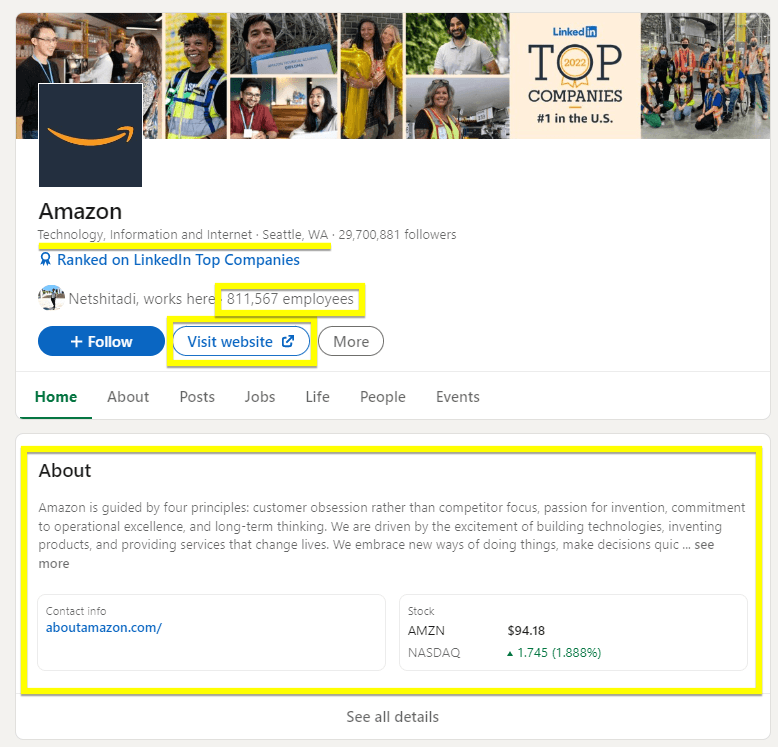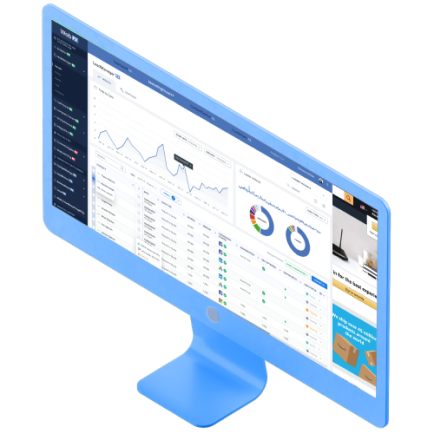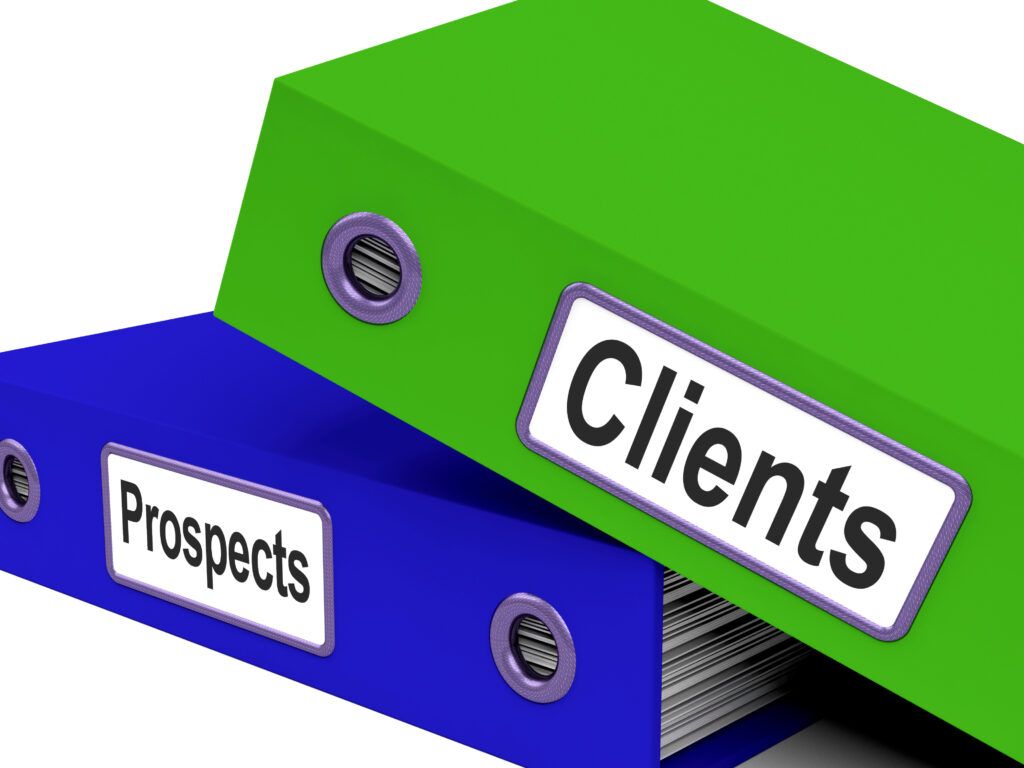-
 Published: Apr 18, 2023
Published: Apr 18, 2023
-
 10 min. read
10 min. read
-
 Sina Mchunu
Sina Mchunu Research & Tech Content Writer
Research & Tech Content Writer
- Sina is a marketing expert who specializes in SEO, AI, and digital marketing content. With over five years of experience, she’s written hundreds of pieces, spanning a variety of topics and industry niches. She loves combining her strong eye for detail and passion for storytelling in her work. You’ll find her fruit picking or horse riding at the local farm when she’s not writing.
Lead qualification assesses whether a prospect is a suitable match for your business offerings and is worth pursuing. This process often takes place during sales conversations to determine the likelihood of retaining clients for the long term.
It is a critical step in the sales process because it saves time and resources by focusing on the most promising prospects. Various lead qualification frameworks can aid you in scoring, qualifying, and advancing prospects through the sales funnel more effectively, making the lead qualification process manageable.
This article covers everything you need to know about lead qualification, including the three levels for qualifying leads and how to qualify leads in five simple steps.
Here’s a brief overview of everything we’ll discuss:
- What is lead qualification?
- Why is it important to qualify leads?
- Three levels of the lead qualification process
- 5 most common lead qualification frameworks
- How to qualify leads in 5 simple steps
- Streamlining your lead qualification process
37% of marketers say that generating high-quality leads was one of their biggest challenges.
We want to decrease that percentage.
WebFX can help you generate high-quality leads with a customized marketing strategy.
Learn More About Lead Generation Services

What is lead qualification?
Lead qualification evaluates a prospect’s potential to convert into a paying client based on information collected through lead capture forms. It uses lead scoring and nurturing to prioritize and engage with leads based on their level of interest and readiness to make a purchase decision.
Why is it important to qualify leads?
Lead qualification helps sales teams save time and resources by focusing on leads with the highest potential to convert into paying clients, increasing efficiency and closing rates. It provides a more targeted approach to sales, leading to an increase in conversions and revenue.
The lead qualification process helps your team better understand their target market and tailor their messaging to meet potential clients’ specific needs and interests. It also aids in creating a more streamlined sales process by prioritizing and organizing leads based on their interest level and readiness to buy.
Three levels of the lead qualification process
All leads must pass through the funnel before being classified as “sales-ready” leads. The lead qualification process categorizes leads into three levels:
1. Marketing Qualified Leads (MQL)
A MQL is a lead that a marketing team examines and categorizes as a prospective client best suited for targeting. This is based on their engagement with marketing content and behavior, which suggests they are ready for further contact from the sales team.
2. Sales Accepted Lead (SAL)
Once an MQL lead meets specific criteria, it can be passed on to the sales team as a SAL.
A SAL is a MQL that has been established, qualified, and sent to the sales team for further evaluation. When a MQL becomes a SAL, the sales team has accepted the lead and is ready to engage with them to move them further down the sales funnel.
3. Sales Qualified Lead (SQL)
A SQL is a SAL that the sales team qualifies as a potential customer. They have shown a strong interest in the product or service and are ready for direct sales contact to convert them into a paying customer.
Once a lead becomes an SQL, the sales team can prioritize their efforts and personalize their approach to increase the chances of a successful conversion. This helps to streamline the sales process and improve overall efficiency.
Our digital marketing campaigns impact the metrics that improve your bottom line.
See More Results
WebFX has driven the following results for clients:
$6 billion
In client revenue
24 million
Leads for our clients
7.14 million
Client phone calls
5 most common lead qualification frameworks
The sales staff needs a reliable framework to determine whether a prospective client is worth pursuing. Here are five of the most common lead qualification frameworks:
1. BANT
BANT — budget, authority, need, and timeline — is a framework that assesses a potential customer’s financial capacity, decision-making power, urgency, and necessity. It gives salespeople the means to tailor their approach to address each lead’s specific metrics and requirements.
Using BANT as a tool helps your business identify leads more likely to result in conversions, shortening the sales cycle and reducing wasted resources. By understanding the BANT criteria, sales teams can prioritize their activities and concentrate their resources on leads with the highest potential for sales success.
2. GPCTBA/C&
GPCTBA/C&I stands for goals, plans, challenges, timeline, budget, authority, consequences, and impact. This framework helps sales reps focus on the long-term benefits of a solution — rather than just pushing for a sale — by looking at the broader impact on the customer’s business.
It also allows the sales team to better understand their customer’s decision-making process and tailor their approach accordingly, resulting in a more prosperous and sustainable customer relationship. By considering GPCTBA/C&I, sales reps can achieve their sales goals while also prioritizing the needs and goals of the customer.
3. MEDDIC
MEDDIC stands for metrics, economic buyer, decision criteria, decision process, identifying pain, and champion. It is a detailed framework that helps reps evaluate a lead’s readiness to buy and their ability to close a deal. Reps can uncover prospects’ challenges, pain points, and overall decision-making processes.
Using MEDDIC, sales reps can understand the key factors contributing to converting a lead into a customer. This method effectively allows them to align their sales pitch with the prospect’s needs and challenges.
MEDDIC’s effectiveness lies in its ability to assess key elements of the buying process and identify potential roadblocks. This information allows sales reps to tailor their messaging and approach to overcome objections and win deals.
4. CHAMP
CHAMP stands for challenges, authority, money, and priority. It helps your sales team qualify leads accurately and discover unique opportunities to solve their problems with the help of your product. By prioritizing these four key areas, your sales team can effectively target the right prospects and solve their problems, ultimately boosting sales and revenue.
Using CHAMP as a framework can also improve communication and alignment between the sales and marketing teams. It accomplishes this by ensuring everyone is on the same page regarding the ideal customer profile (ICP) and the key messages that resonate with them.
Additionally, it can help identify any gaps in the sales process that you must address to serve the customer and close deals efficiently.
5. ANUM
ANUM — authority, need, urgency, and money — can complement CHAMP by providing a systematic approach to understanding the prospect’s pain points. This framework can help guide individuals or teams in assessing a problem’s relevance ans performance and making informed decisions based on identified factors.
ANUM helps sales teams prioritize their leads based on the four key factors (authority, need, urgency, and money), increasing their sales process’ efficiency and effectiveness. Additionally, ANUM can provide a clear roadmap for sales teams, outlining what steps to take with different types of leads.
Measuring the metrics that affect your bottom line.
Are you interested in custom reporting that is specific to your unique business needs? Powered by MarketingCloudFX, WebFX creates custom reports based on the metrics that matter most to your company.
- Leads
- Transactions
- Calls
- Revenue


How to qualify leads in 5 simple steps
Let’s go over the primary steps you should take when qualifying leads:
- Get to know your leads
- Ensure you have complete information on profiles
- Score your leads to prioritize your sales efforts
- Choose a framework that aligns with your business goals
- Use marketing automation tools
1. Get to know your leads
The first step in lead qualification is learning about your prospects, and a simple online search can yield a wealth of information. This research can involve looking into their industry, competitors, and relevant news or events. The goal is to build a comprehensive picture of their needs and pain points so you can tailor your messaging accordingly.
You can use social media research tools to learn more about your prospects’ demographics and personality traits. For one, insights from Facebook Meta Business Suite may shed light on your leads’ wants and demands.
Business-to-business (B2B) salespeople can learn a lot about a lead’s position, ambitions, hobbies, and worries by reading their LinkedIn profile. Also, your prospective client may have a website you can peruse to learn more about the company’s mission, beliefs, and offerings and find ways to get in touch with relevant personnel.

Once you have a solid understanding of who your prospects are, you can start identifying the specific challenges they’re facing. Doing so helps you frame your messaging to speak directly to their needs and position your solution as the ideal answer to their problems.
2. Ensure you have complete information on profiles
Lead profiles help businesses communicate with potential customers more efficiently. Typically, a data profile includes contact information, a job title, company size, industry, and interests. Complete data profiles enable you to personalize your approach and tailor your message to their specific interests and pain points, improving the chances of converting them into customers.
The best way to ensure that you have complete data profiles is to update and verify the information provided by your clients regularly. You can also gather data from various sources, such as social media and online directories, to enrich your database and better understand your target audience.
3. Score your leads to prioritize your sales efforts
Now that you understand your leads, their pain points, and their complete data profiles, you can start scoring them to determine their potential value to your organization.
The best way to score leads is to assign point values to specific actions or behaviors that indicate a higher level of interest or readiness to purchase. Doing so allows you to prioritize your efforts and focus on the leads with the most potential to become customers.
Regularly evaluating and adjusting your lead scoring model can optimize your efforts, ensuring your time and resources are used effectively. Analyze your scoring model continually to ensure it accurately reflects your target audience and the behaviors that signify strong leads.
4. Choose a framework that aligns with your business goals
After scoring your leads, it’s time to choose the appropriate framework. The best way to select a lead qualification framework is to evaluate your specific needs and goals as a business and choose one that aligns with them. This will help ensure that your chosen framework is tailored to your needs and will effectively identify strong leads.
Also, consider the level of automation you want in your lead qualification process. Some frameworks are more manual, while others are automated or use machine learning algorithms. Choose the one that best fits your resources and capabilities.
5. Use marketing automation tools
With the appropriate framework, you can use marketing automation tools to nurture and move those leads through your sales funnel. For instance, MarketingCloudFX can help you engage with prospects at the right points in their buyer journey and increase conversion rates.
Meet MarketingCloudFX:
One platform tracking countless metrics and driving stellar results.
Learn More About Our Proprietary Software

It also allows for easy segmentation of your leads based on behavior and demographics, allowing for more personalized and targeted messaging. Using MarketingCloudFX can ultimately lead to higher customer satisfaction and a better return in investment (ROI) for your marketing efforts.
Need help streamlining your lead qualification process?
WebFX offers lead generation services that utilize marketing automation tools to help identify, qualify, nurture, and convert high-quality leads. Our lead generation team can help you create a streamlined lead qualification process that maximizes your ROI and drives long-term success for your business.
Plus, our state-of-the-art technologies — MarketingCloudFX and Nutshell — assist you with lead management and conversion nurturing. We have generated over 24 million leads for our clients — we can do the same for you.
Got questions? Contact us online or call 888-601-5359 to speak with a strategist!
-
 Sina is a marketing expert who specializes in SEO, AI, and digital marketing content. With over five years of experience, she’s written hundreds of pieces, spanning a variety of topics and industry niches. She loves combining her strong eye for detail and passion for storytelling in her work. You’ll find her fruit picking or horse riding at the local farm when she’s not writing.
Sina is a marketing expert who specializes in SEO, AI, and digital marketing content. With over five years of experience, she’s written hundreds of pieces, spanning a variety of topics and industry niches. She loves combining her strong eye for detail and passion for storytelling in her work. You’ll find her fruit picking or horse riding at the local farm when she’s not writing. -

WebFX is a full-service marketing agency with 1,100+ client reviews and a 4.9-star rating on Clutch! Find out how our expert team and revenue-accelerating tech can drive results for you! Learn more
Try our free Marketing Calculator
Craft a tailored online marketing strategy! Utilize our free Internet marketing calculator for a custom plan based on your location, reach, timeframe, and budget.
Plan Your Marketing Budget
Table of Contents
- What is Lead Qualification?
- Why is It Important to Qualify Leads?
- Three Levels of the Lead Qualification Process
- 1. Marketing Qualified Leads (MQL)
- 2. Sales Accepted Lead (SAL)
- 3. Sales Qualified Lead (SQL)
- 5 Most Common Lead Qualification Frameworks
- 1. BANT
- 2. GPCTBA/C&
- 3. MEDDIC
- 4. CHAMP
- 5. ANUM
- How to Qualify Leads in 5 Simple Steps
- 1. Get to Know Your Leads
- 2. Ensure You Have Complete Information on Profiles
- 3. Score Your Leads to Prioritize Your Sales Efforts
- 4. Choose a Framework That Aligns with Your Business Goals
- 5. Use Marketing Automation Tools
- Need Help Streamlining Your Lead Qualification Process?

Maximize Your Marketing ROI
Claim your free eBook packed with proven strategies to boost your marketing efforts.
Get the GuideTry our free Marketing Calculator
Craft a tailored online marketing strategy! Utilize our free Internet marketing calculator for a custom plan based on your location, reach, timeframe, and budget.
Plan Your Marketing Budget





